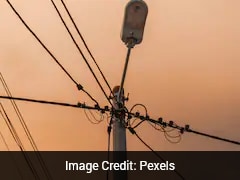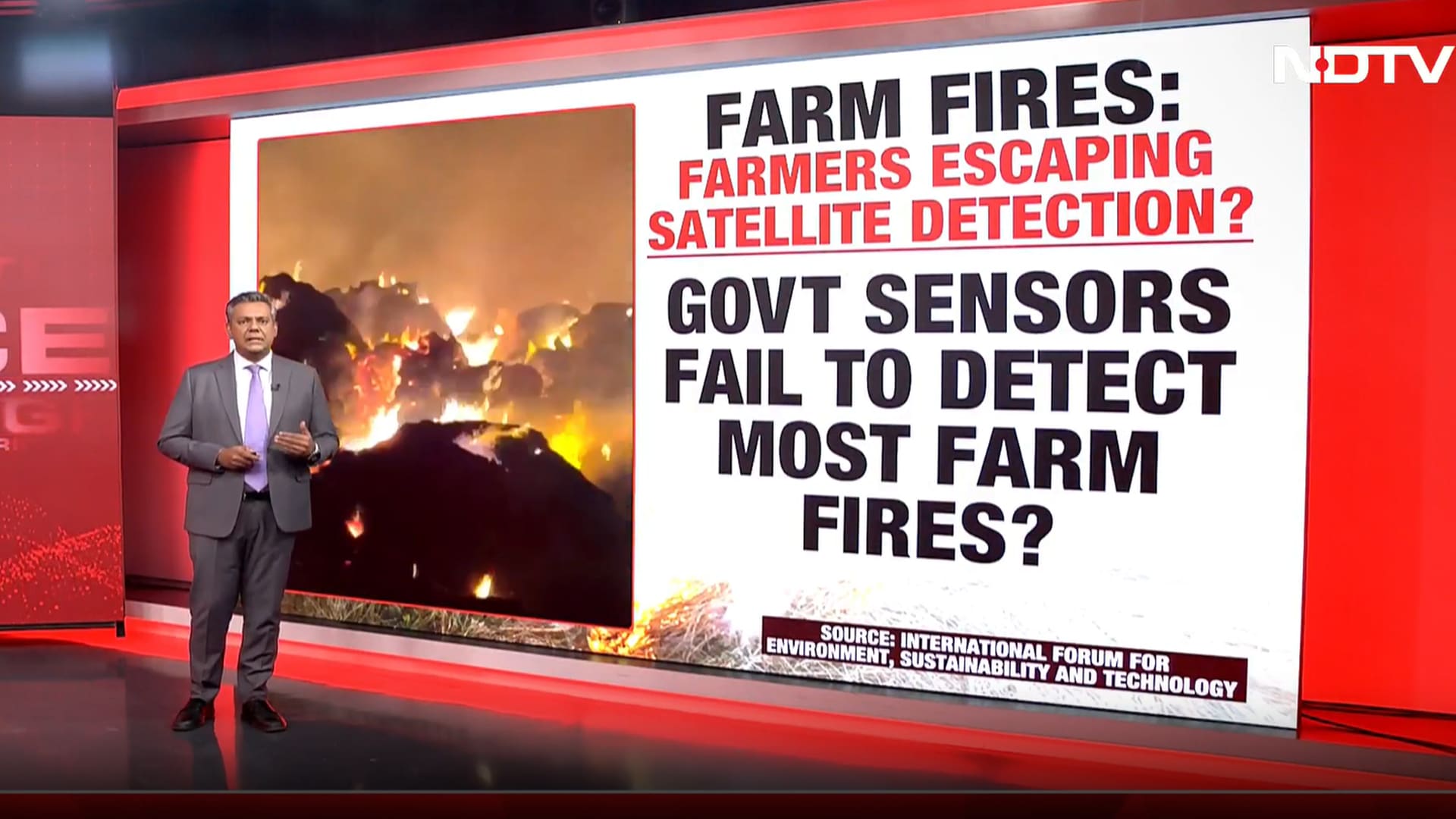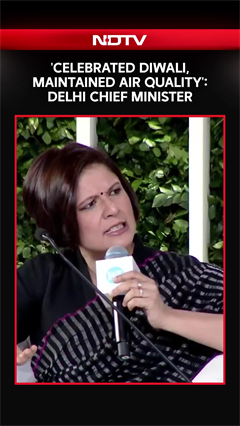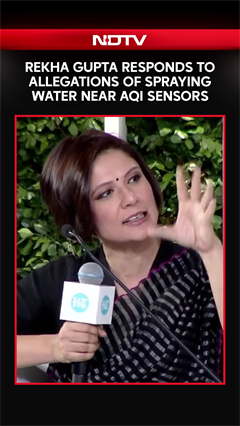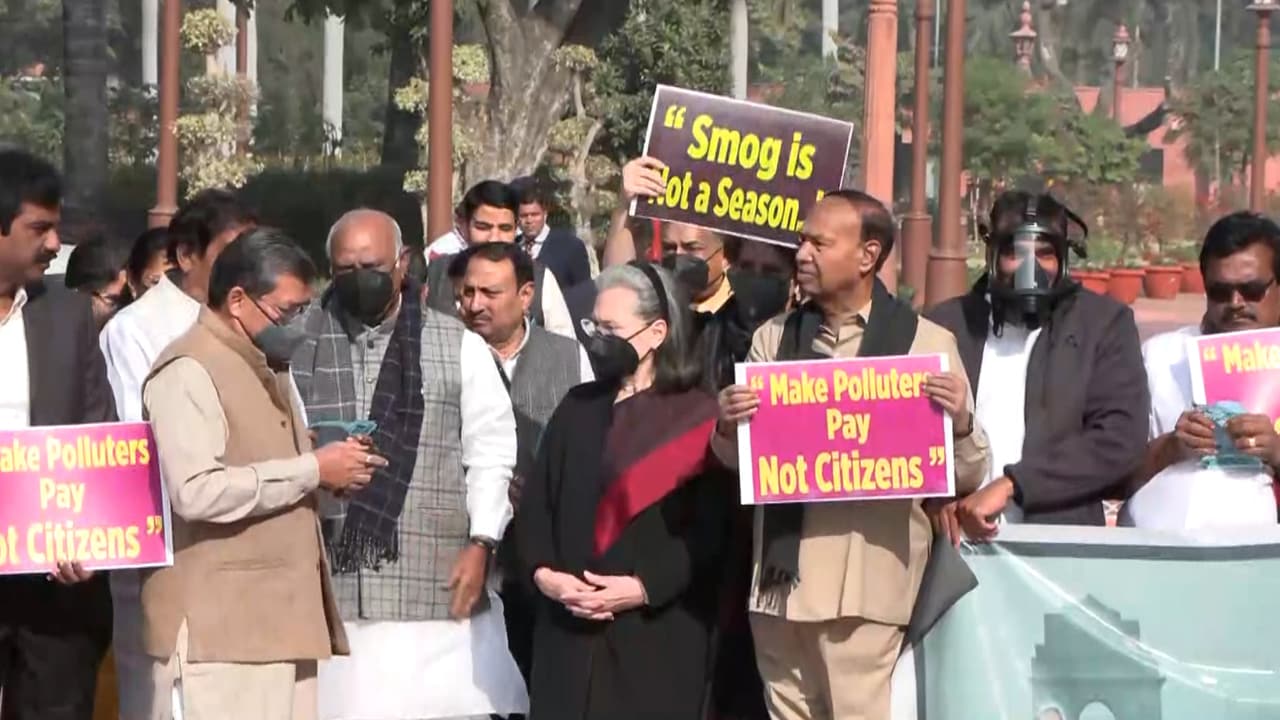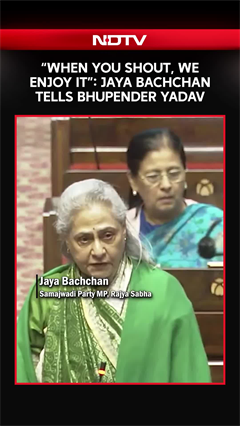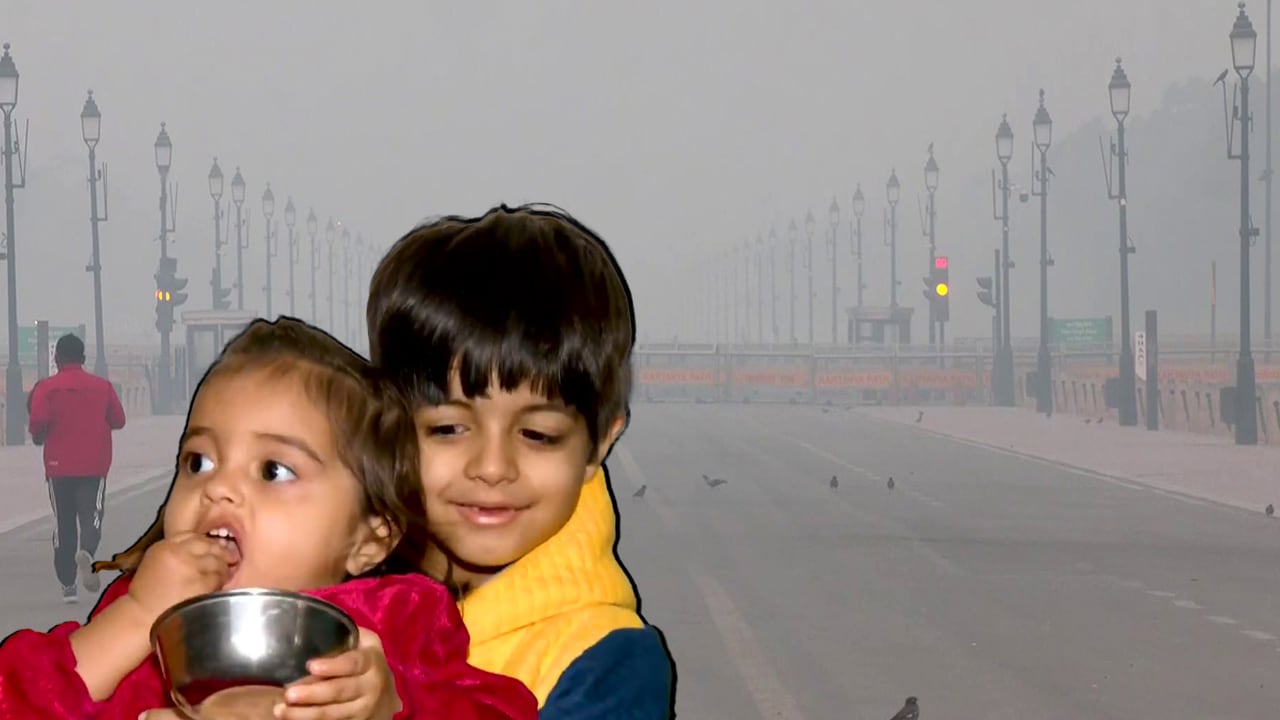- Home/
- Toxic Haze Covers Delhi For 2nd Straight Day, Air Quality Remains 'Very Poor'
Toxic Haze Covers Delhi For 2nd Straight Day, Air Quality Remains 'Very Poor'
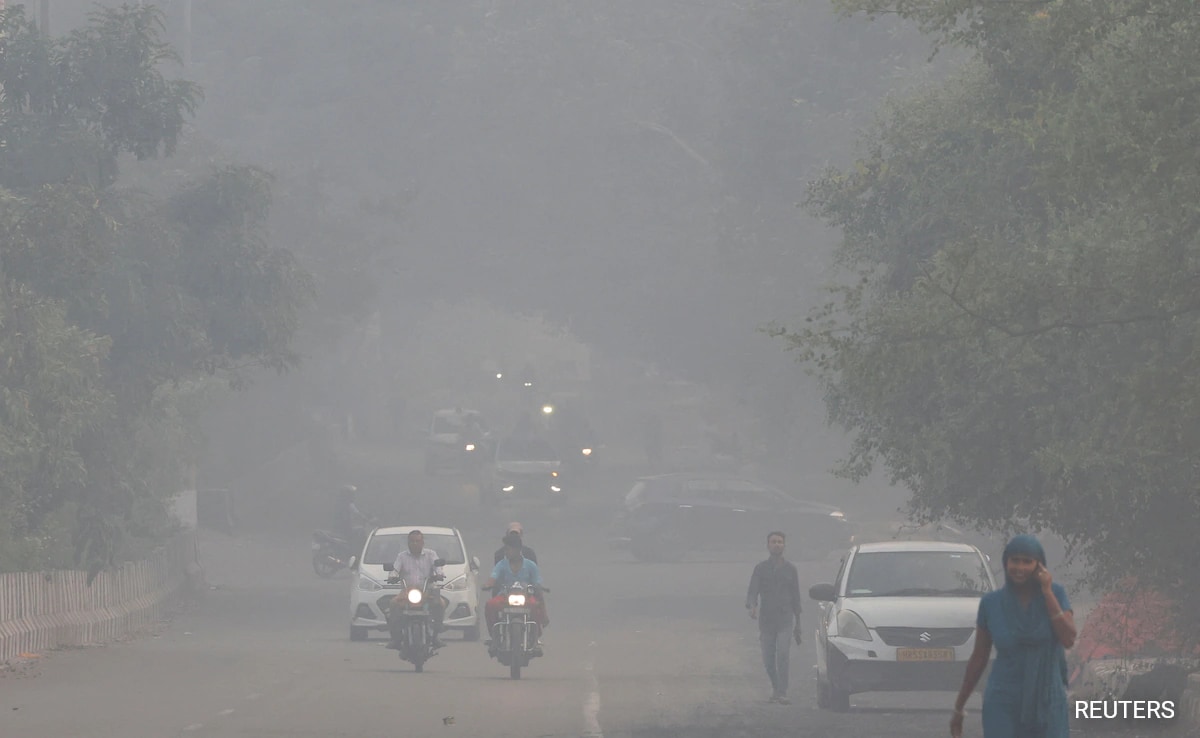
Highlights
- A thick layer of toxic haze covered Delhi for the second day after Diwali
- Delhi's air quality index was 345 at 7 am, categorised as very poor
- Punjabi Bagh and Wazirpur stations were in the severe zone with AQI above 400
A thick layer of toxic haze covered Delhi for the second straight day post Diwali as people continued to burst firecrackers beyond the two-hour limit set by the Supreme Court. The air quality remained in the 'very poor' category at 345 at 7 am, according to the data available on the Central Pollution Control Board (CPCB) website.
Of the total 38 monitoring stations, 34 were in the 'red zone', indicating 'very poor' to 'severe' air quality. Two stations - Punjabi Bagh and Wazirpur - were in the 'severe zone' with the AQI at 433 and 401.
An AQI between 0 and 50 is considered 'good', 51 and 100 'satisfactory', 101 and 200 'moderate', 201 and 300 'poor', 301 and 400 'very poor', and 401 and 500 'severe'.
#Watch | Toxic Haze Covers Delhi For 2nd Straight Day, Air Quality Remains 'Very Poor'https://t.co/aiMqWPPnArpic.twitter.com/cWUDEBfXzr
— NDTV (@ndtv) October 22, 2025
Visuals from the ITO, where the air quality index was recorded at 361, showed a layer of smog hovering in the area.
#WATCH | Visuals from the ITO as GRAP-2 invoked in Delhi.
— ANI (@ANI) October 22, 2025
The Air Quality Index (AQI) in the region was recorded at 361, in the 'Very Poor' category, this morning pic.twitter.com/4KEqIV2wRc
The air quality index (AQI) stood at nearly 350 on Tuesday - a five-year post-Diwali low despite a 77.5 per cent drop in stubble burning, which was normally a significant reason for air pollution in the national capital. The PM2.5 levels reached shocking averages of 488 micrograms per cubic metre - nearly 100 times the exposure limit advised by the World Health Organisation.
This comes despite the Supreme Court's guidelines to use only 'green' crackers.
In an order passed on October 15, the top court allowed the use of green firecrackers in Delhi-NCR between 8 pm and 10 pm on Diwali. It was confined to specific hours - 6 am to 7 pm on the day before Diwali and 8 am to 10 pm on the festival day. However, many residents violated the court's directions, with celebrations continuing late into the night.
Politics over Delhi air quality
The Aam Aadmi Party (AAP), whose failure to address smog and pollution in the Yamuna had been a big factor in its defeat earlier this year, slammed the ruling BJP in the state over the rising air pollution. AAP MLA Gopal Rai accused the Delhi government of "making excuses" and not taking action to prevent the pollution.
He also accused BJP leaders of pushing people to burst firecrackers despite the air emergency in the capital.
AAP state chief Saurabh Bharadwaj mocked Rekha Gupta over the rising pollution, claiming she does not know how to "pronounce AQI". "We don't know what the government has done. The Chief Minister does not even know how to pronounce AQI. She calls it IQ, QQ. She can't even say AQI. She has no understanding. The government has failed to stop pollution," he said.
The BJP, however, in response, blamed the citizens for bursting crackers and cited stubble burning from nearby states for the thick blanket of smog hovering over the national capital.
also read
Latest Stories
- Press Trust of India | Wednesday December 10, 2025 , New Delhi
Amid high pollution levels in the capital, the Delhi Pollution Control Committee (DPCC) has issued directions mandating a strict ban on the use of coal and firewood in tandoors across all hotels, restaurants and open eateries in the city.
- Press Trust of India | Monday December 08, 2025 , New Delhi
Delhi's air quality remained locked in the 'very poor' category on Monday, with the air quality index (AQI) staying above 300, while forecasts suggest that pollution levels are likely to deteriorate further.
- Reported by Ashwine Kumar Singh | Monday December 08, 2025 , New Delhi
Delhi Chief Minister Rekha Gupta's remarks about the government using mist sprayers to contain pollution at hotspots has drawn a stinging response from her predecessor Arvind Kejriwal.
- Written by Rupashi Chhabra | Monday December 08, 2025
Maintaining lung health is essential for longevity. Here are five simple steps to perform an anti-pollution lung detox for long-term well-being.
- Edited by Astitva Raj | Sunday December 07, 2025
His post clearly explains the various daily challenges he faced after moving to India from Ireland.
................................ Advertisement ................................
Latest Videos
Opinion
Blog | Well Done, Delhi. You've Turned Lung Sacrifice Into A Badge Of HonourSaikat Kumar Bose
Monday November 10, 2025Till some years back, Delhiites would ask angry questions to those in power about the capitals annual tryst with toxic air. This has changed. Those in the driving seat dont see the need to answer now.
Opinion | Why Indians Have Just Given Up On Air Pollution CrisisTanushree Ganguly
Friday December 20, 2024While some may argue that people in Delhi are now more aware of air pollution than they were a decade back, my rebuttal would be that awareness does not mean that people are concerned.
Opinion | You Must Outrage Over Filthy Air More Than Once A YearJyoti Pande Lavakare
Tuesday December 10, 2024Delhi welcomed us with monsoon rains and mangos. We were home. Fast forward a couple of years, in the winter of 2012, I found myself in denial about something other parents, mostly expats, were calling toxic air.
Opinion | Delhi's Air Pollution Situation Is Like A Bad MarriageNishtha Gautam
Friday November 22, 2024On a good day, such as today, the AQI reading in Delhi is 407. We are jubilant at the sickly sunshine trickling through the slightly dissipated smog. At least its not 1600.
दिवाली... पराली... सियासी जुगाली!Ashwini kumar
Monday November 18, 2024दिल्ली-एनसीआर में प्रदूषण का समाधान तो आज तक मिला नहीं. हर साल चिंतित होकर हम-आप सांसों की तकलीफ के साथ-साथ दिल और ब्लड प्रेशर के मरीज भी क्यों बनें?







